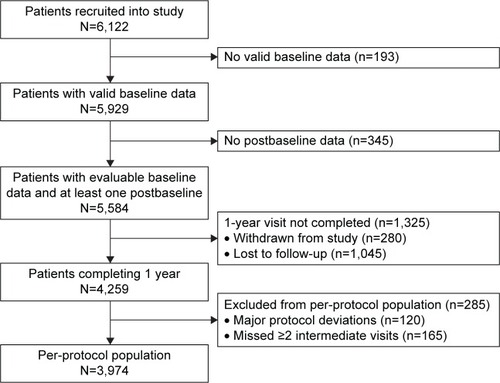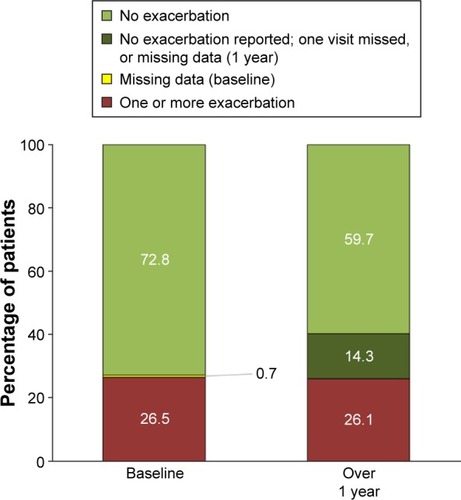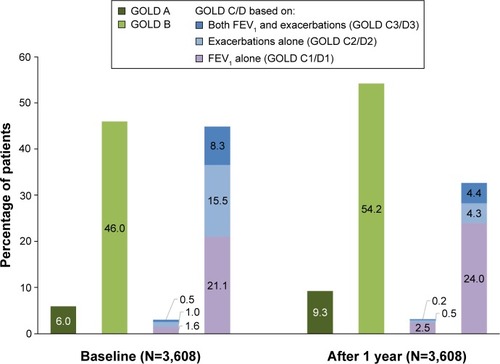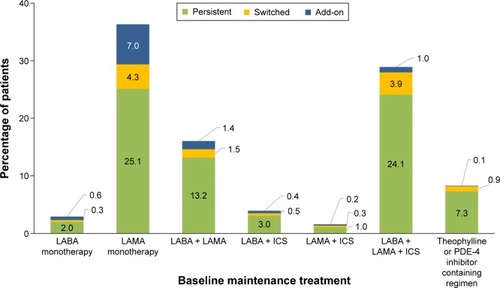Figures & data
Table 1 Baseline demographics and disease characteristics
Figure 1 Cohort 1 patient flow through the first year of DACCORD.

Figure 2 Annualized exacerbation rate (and 95% CI) during the 1-year follow-up period, in patients grouped according to baseline GOLD 2011 category.
Abbreviation: GOLD, Global Initiative for Chronic Obstructive Lung Disease.

Table 2 Number (%) of patients reporting 0, 1, and ≥2 exacerbations over 1 yearTable Footnotea (per-protocol population; N=3,974)
Figure 3 Percentage of patients reporting exacerbations at baseline and during the 1 year follow-up period (per-protocol population; N=3,974).

Figure 4 GOLD 2011 categorization at baseline and after 1 year (per-protocol population).
Abbreviations: GOLD, Global Initiative for Chronic Obstructive Lung Disease; FEV1, forced expiratory volume in 1 second.

Table 3 CAT total score (per-protocol population; N=3,974)
Figure 5 Percentages of patients persisting with, switching, or adding on medication classes at 1 year (per-protocol population).
Abbreviations: LABA, long-acting β2-agonist; LAMA, long-acting muscarinic antagonist; ICS, inhaled corticosteroid; PDE-4, phosphodiesterase-4.

